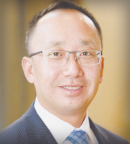Guest Editor’s Note: Despite the increasing use of complementary modalities that include mind-body therapies and natural products, significant disparities exist in integrative health care. Contributing factors include access to care and affordability. In this installment of The ASCO Post’s Integrative Oncology series, Ana Maria López, MD, MPH, MACP, FRCP, emphasizes the importance of increasing awareness, education, a diverse integrative oncology workforce, and advocating for insurance coverage to ensure affordable, accessible, and equitable integrative health care.

Ana Maria López, MD, MPH, MACP, FRCP
Integrative health is generally defined as a patient-centered approach that is inclusive of the health professions incorporating traditional systems of healing and evidence-informed clinical approaches. It emphasizes wellness and risk reduction, and recognizes the health of the individual, the community, and the planet as interdependent elements that contribute to health and illness.1
In 2017, a comprehensive definition of integrative oncology was developed to facilitate a better understanding of this emerging field.2 “Integrative oncology is a patient-centered evidence-informed field of cancer care that utilizes mind and body practices, natural products, and/or lifestyle modifications from different traditions alongside conventional cancer treatments. Integrative oncology aims to optimize health, quality of life, and clinical outcomes across the cancer care continuum and to empower people to prevent cancer and become active participants before, during, and beyond cancer treatment.”
Given this inclusive perspective, one might think there would be no disparities in integrative health. In fact, although improving, disparities exist and are likely related to similar reasons that contribute to health disparities overall.
Access to and Cost of Care
To achieve equitable care, access to care is foundational. In the United States, access to health care is variable and directly linked to access to health insurance, which is most often linked to employment. Overall, integrative health services are inconsistently covered by health insurance, and when coverage is available, it is more likely to be partial.
GUEST EDITOR

Jun J. Mao, MD, MSCE
Dr. Mao is Laurance S. Rockefeller Chair in Integrative Medicine and Chief of Integrative Medicine Service at Memorial Sloan Kettering Cancer Center, New York.
Despite limited coverage, integrative health care is sought by many. The 2012 National Health Interview Survey (NHIS) revealed that one-third of adults and more than 10% of children used nonallopathic healing approaches. This most commonly involved the use of supplements, primarily fish oil. Other approaches included chiropractic care, osteopathic manipulation, yoga, meditation, and massage. Of note, nearly 50% of cancer survivors in the United States seek integrative health approaches.3 Currently, most National Cancer Institute (NCI)-designated comprehensive cancer centers offer information about integrative approaches, with about 75% offering at least one integrative care modality.4
The NHIS also revealed that although not generally covered by health insurance, the annual nonallopathic health expenditure in the United States exceeded $30 billion dollars as out-of-pocket costs. These costs consisted of nearly $3 billion in homeopathic remedies and educational materials such as books or audiovisual media; nearly $13 billion in natural products; and approximately $15 billion toward chiropractor, acupuncturist, and massage therapist visits. These costs represent approximately 10% of all out-of-pocket expenditures on health care in the United States in 2012.5
If we look more closely to ascertain who is using integrative health approaches, it makes sense that they would be the segment of population with disposable income who can afford the out-of-pocket costs. Indeed, several large surveys have identified that those who seek nonallopathic care are most often well-educated, employed, insured, White (European descent), and female.6
Unfortunately, despite the culturally diverse historic roots of several integrative health approaches, they may not be easily accessible to the communities from which they emerged. Consequently, there is a need to expand accessibility of these approaches, especially as science has enhanced our understanding of cancer as a metabolic illness. Integrative health modalities such as mind-body practices and lifestyle modification may be uniquely positioned to reduce cancer risk and promote health.7 More importantly, because these approaches are nontechnological or nonpharmaceutical, the benefits may outweigh the costs.7
Steps to Expanding Accessibility to Care
The first steps toward expanding accessibility to care are awareness and education. We must educate our patients and ourselves on an ongoing basis to provide the highest-quality, evidence-informed integrative oncology care possible. We must support the development of a patient-centered, interprofessional, diverse integrative oncology workforce, which is available to patients regardless of geography. We must advocate for insurance coverage of integrative oncology care to support affordability.8 Furthermore, we must explore and address our own beliefs and behaviors that may perpetuate bias and discrimination.9 Integrative health approaches such as mind-body approaches can lend themselves well to this reflective action-oriented process.
Integrative health modalities such as mind-body practices and lifestyle modification may be uniquely positioned to reduce cancer risk and promote health.— Ana Maria López, MD, MPH, MACP, FRCP
Tweet this quote
With the COVID-19 pandemic exacerbating existing inequities in access, care, and outcomes, awareness and education are also crucial for partnering with our communities. These collaborations will result in clearer communication, which takes into consideration language, numeracy, and culture and recognizes, acknowledges, and respects the diverse and global origins of existing healing systems. This approach can have a great impact and reach.
Furthermore, interprofessional partnerships will ensure supporting entry and success of diverse workforce in the field of integrative oncology. We must also consider culturally fluent mentorship, membership in professional organizations, and representation in professional meetings and leadership.
Thinking Outside the Box
As we strive to reduce inequities in integrative health care, we remain steadfast in our goal of advancing the field of integrative oncology. This involves developing new models of thinking, assessment, and implementation. The Trans NCI-NIH Virtual Conference on “International Perspectives on Integrative Medicine for Cancer Prevention and Cancer Patient Management,” held in October 2020, offered a venue to learn about the global opportunities and challenges of integrative oncology. Participants discussed how best to advance research, education, and promote the integration of traditional, complementary, and integrative medicine into conventional cancer care, as well as to influence health-care policy.
Dr. López is Professor and Vice Chair of Medical Oncology, Sidney Kimmel Medical College, Thomas Jefferson University, and Chief of Cancer Services for the Sidney Kimmel Cancer Center, Jefferson Health, New Jersey.
DISCLOSURE: Dr. Lopez reported no conflicts of interest.
REFERENCES
1. Academy of Integrative Health & Medicine. Home page. Available at aihm.org/vision/. Accessed May 26, 2022.
2. Witt CM et al: A comprehensive definition for integrative oncology. J Natl Cancer Inst Monogr 2017(52), 2017.
3. Horneber M et al: How many cancer patients use complementary and alternative medicine. Integr Cancer Ther 11:187-203, 2012.
4. Yun H et al: Growth of integrative medicine at leading cancer centers between 2009 and 2016. J Natl Cancer Inst Monogr 2017:Igx004, 2017.
5. National Center for Complementary and Integrative Health: Paying for complementary and integrative health approaches. Available at www.nccih.nih.gov/health/paying-for-complementary-and-integrative-health-approaches. Accessed May 26, 2022.
6. Clarke TC et al: Trends in the use of complementary health approaches among adults: United States, 2002–2012. Natl Health Stat Report 79:1-16, 2015.
7. Viscuse PV et al: Integrative medicine in cancer survivors. Curr Opin Oncol 29:235-242, 2017.
8. Saper R: Integrative medicine and health disparities. Glob Adv Health Med 5:5-8, 2016.
9. Chao MT, Adler SR: Integrative medicine and the imperative for health justice. J Altern Complement Med 24:101-103, 2018.

